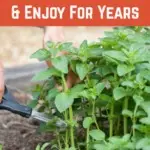
Herb gardening is a fantastic gateway into gardening for those who are new to growing their own.
There are many herbs you can easily grow even if you don’t have a garden at all. All you need is a sunny windowsill.
But herbs are also important for established gardeners. Incorporating a range of perennial herbs in your growing areas can help you garden organically and create a balanced and productive garden ecosystem.
Why Grow Perennial Herbs at Home?
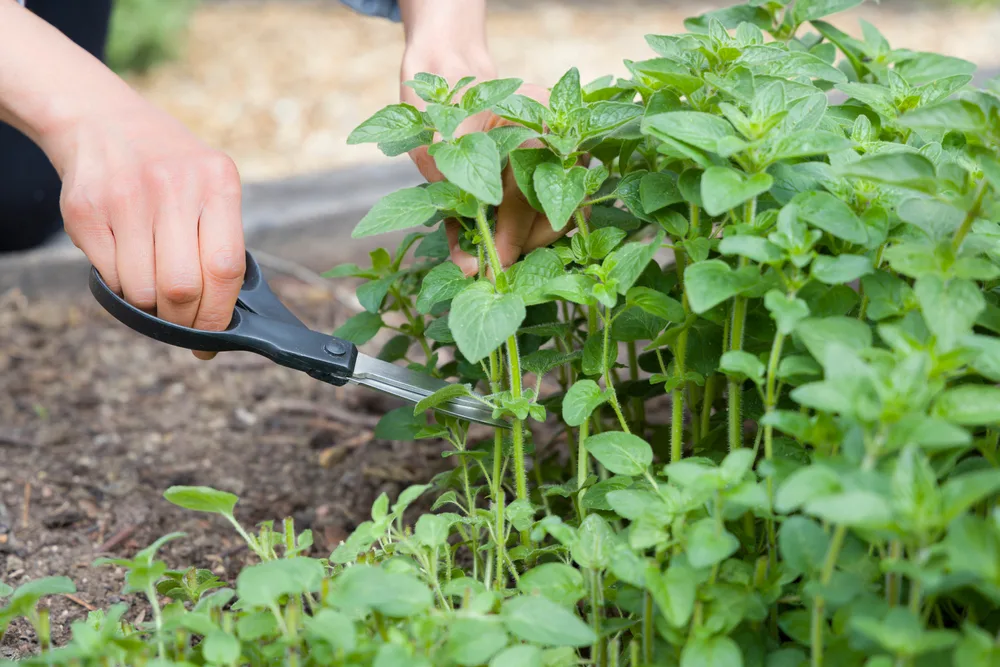
No matter where you live, and how and where you grow them, growing perennial herbs is a great idea. Here are just some of the reasons why you should consider growing some at home:
- Perennial herbs, unlike annual ones, can be planted once and provide you with a yield not just for one season, but for a number of years.
- Many perennial herbs are very easy to grow, and need minimal input from you, as a gardener.
- Herbs can often be great for pest control – helping to repel, confuse or distract a range of pests.
- They can also be great for attracting beneficial wildlife – such as pollinators and predatory insects.
- Numerous perennial herbs are excellent for culinary use. They can add depth of flavour to a wide range of dishes.
- A number also have medicinal properties, and can be used to create a range of herbal remedies.
- You can also use perennial herbs in a range of natural cleaning and beauty products, and for other uses around your home.
Where To Grow Perennial Herbs
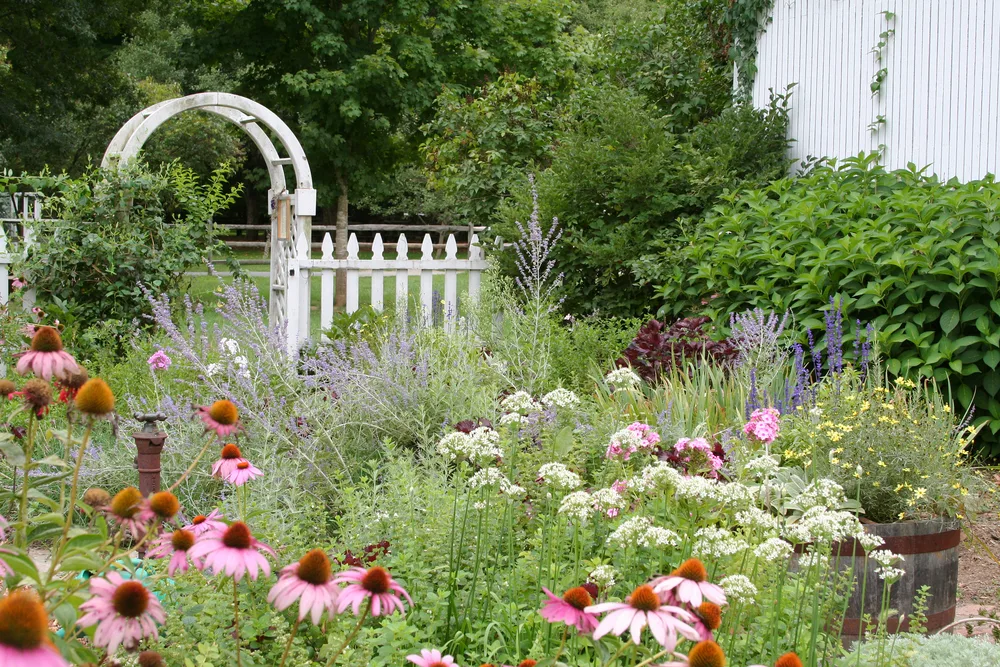
One of the great things about perennial herbs is that you can grow them in a wide range of locations. For example, you can:
- Grow them in pots and containers indoors or on a balcony or patio.
- Create a dedicated in-ground herb garden growing area on your property.
- Make a raised bed for growing perennial herbs, or in fact, you could buy one. (A herb spiral is one type of bed that could be ideal for growing a range of perennial herbs.)
- Include perennial herbs in and amongst annual crops in mixed polyculture planting schemes.
- Add perennial herbs to mixed perennial polyculture beds or borders.
- Establish a forest garden, with perennial herbs in the herbaceous layer.
The important thing to remember is that different perennial herbs have different growing needs, and will thrive in different settings. It is vital to choose the right plants for the right places.
For example, some perennial herbs thrive in full sun, and warm conditions, while others do best in partial or dappled shade. Some do best in less fertile soil, while others need a much richer growing medium to do well.
Choosing Perennial Herbs
When choosing perennial herbs, as well as planting for your location, it is important to think about why and where you will be growing them.
Think about the herbs that you like to eat when choosing culinary herbs. Think about how each of the perennial herbs you are considering can be used. Remember that herbs can have multiple uses – both in garden design, while in growth, and in your home, when harvested.
It is a good idea to educate yourself about the uses of various herbs before deciding which ones to include in your planting schemes.
To help you begin your research, here are 35 perennial herbs that you might like to look into. These are amongst the herbs I consider to be most useful, and which can be great choices for a range of gardens:
35 Perennial Herbs To Grow At Home:
1. Rosemary
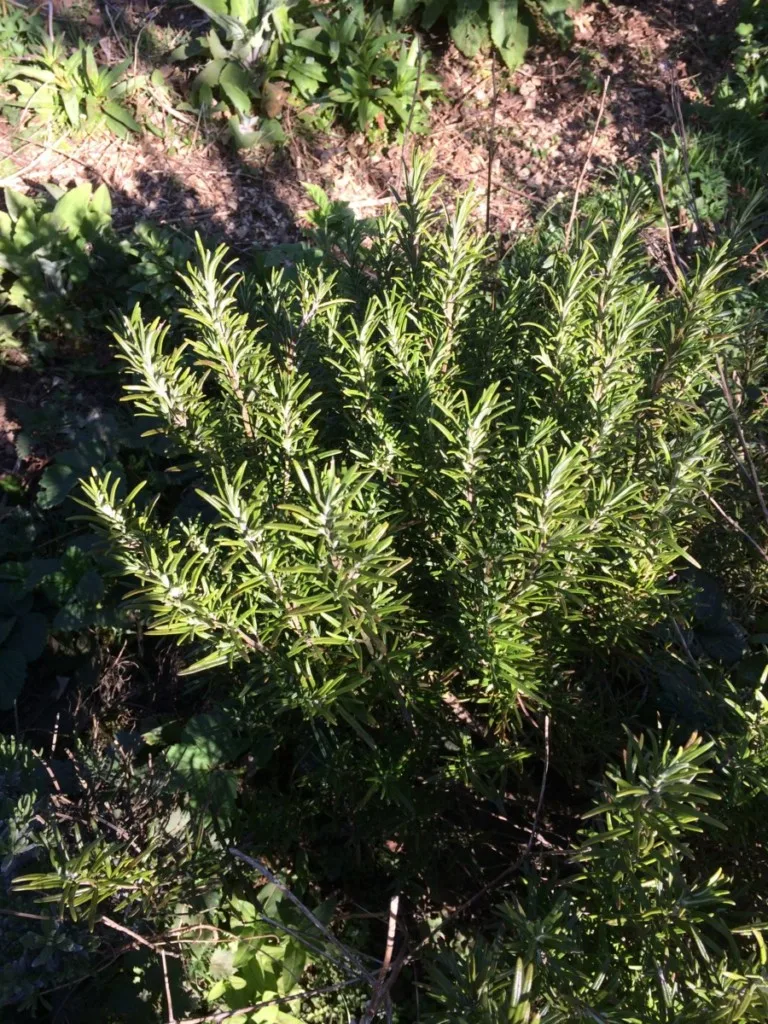
Rosemary is one traditional culinary perennial herb that can find a place in many gardens. It is great for growing in drought-prone areas since it is rather tolerant of low rainfall levels.
It will thrive when planted in a free-draining and sunny spot. And works well when planted alongside other Mediterranean herbs with similar growing requirements (such as the next four herbs on this list).
Rosemary is also a useful companion plant for tomatoes, and a range of other common annual crops, since it will attract a range of beneficial insects in your garden.
Of course, once harvested, it can be used in many dishes. It also has a range of medicinal and other uses.
2. Lavender
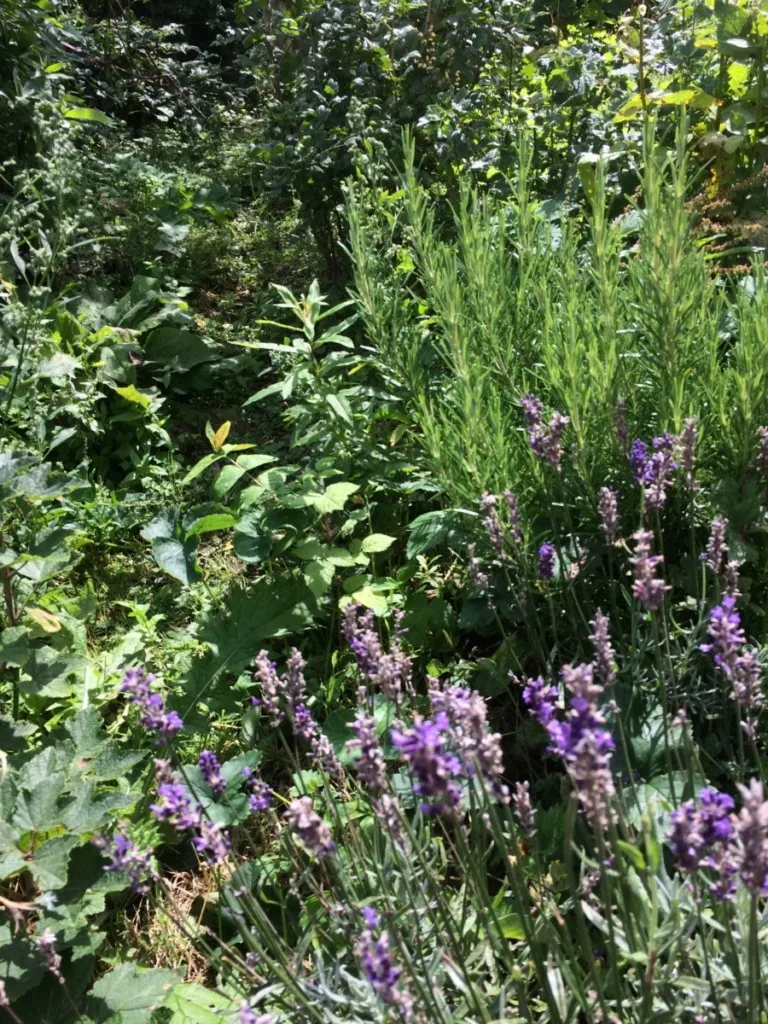
This is another Mediterranean herb that is a great choice, both for your garden and to provide various yields for your home.
Lavender has certain limited culinary applications, though it is more commonly used in home-made cleaners and beauty products, in which it is prized for its beautiful fragrance.
Lavender is particularly beneficial for its bee-attracting properties. Though it will also attract a range of other beneficial insects to your garden. It is also known for its soothing and relaxing properties as a herbal medicine.
3. Oregano
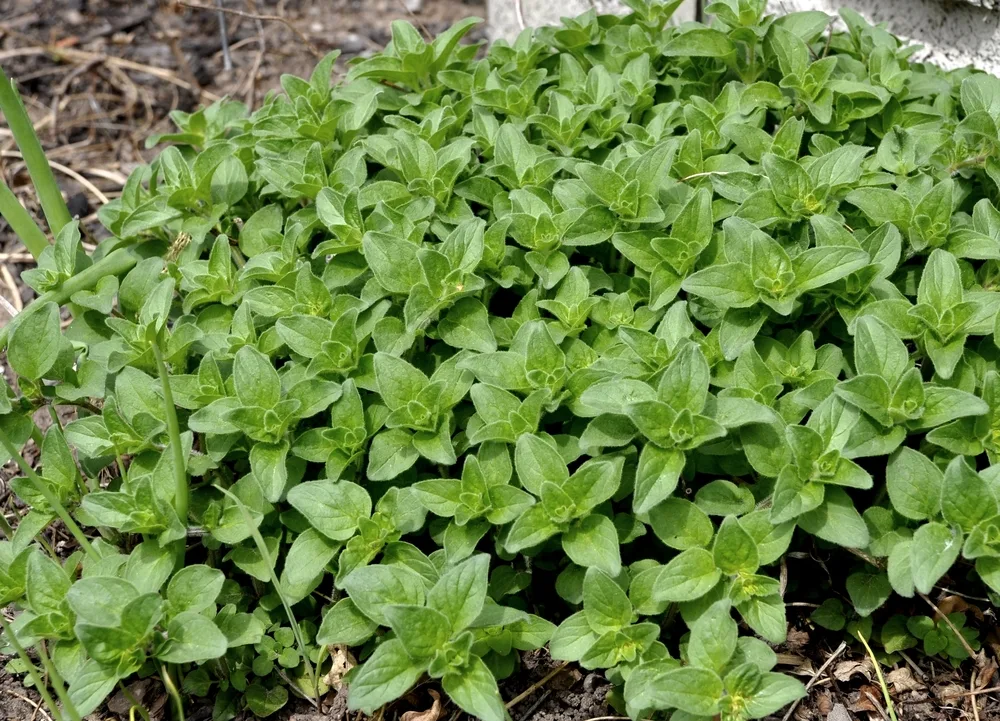
Oregano is another important herb in Mediterranean style cooking, and can be used, fresh or dry, in a range of recipes.
As an aromatic herb, oregano is said to repel a range of common insect pests, and so it is good for confusing, repelling or distracting a range of annoying species. It can attract a range of beneficial wildlife as well.
Oregano also has a number of other uses in the home – from traditional natural remedies, to soaps and perfumery – especially in essential oil form.
4. Marjoram
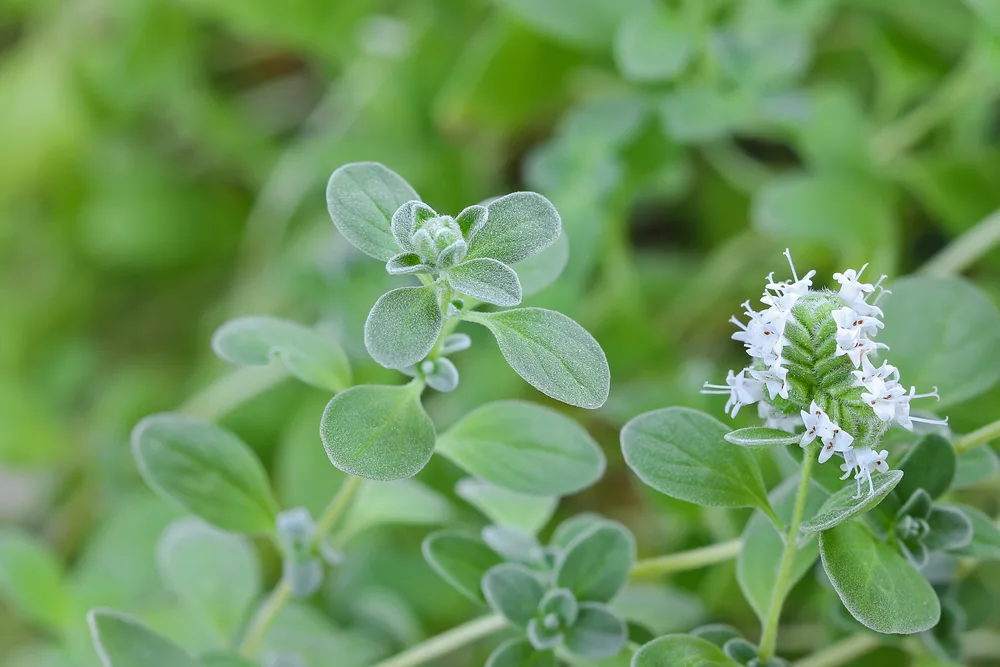
Not to be confused with oregano (sometimes referred to as pot marjoram), sweet marjoram has a somewhat less strong flavour and aroma, and is usually used fresh, and added only towards the end of cooking. As with oregano, marjoram is largely used as a culinary herb.
However, like oregano, marjoram also has applications in herbal medicine, and for other products for use in the home. The flowers are attractive to bees and attract other beneficial creatures to your garden.
5. Thyme
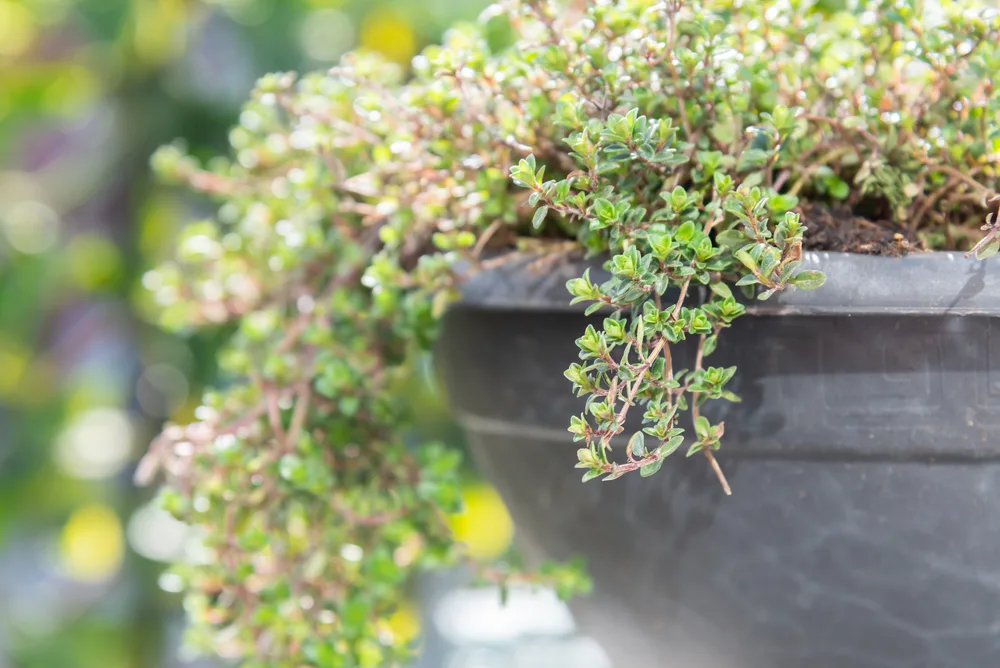
Thyme is a good companion plant because it is particularly good at attracting hoverflies/ Syrphidae which reduce aphid numbers through predation. It also attracts other beneficial insects, and can spread to create good ground cover to protect the soil.
There are a number of different thymes to choose from, which offer a range of different scents and flavours for culinary use, and for other uses. For example, thymes can be strong in flavour like oregano, or much milder.
There are mint thymes, and lemon thymes, and a range of other flavour combinations perfect for adventurous cooks.
6. French Tarragon
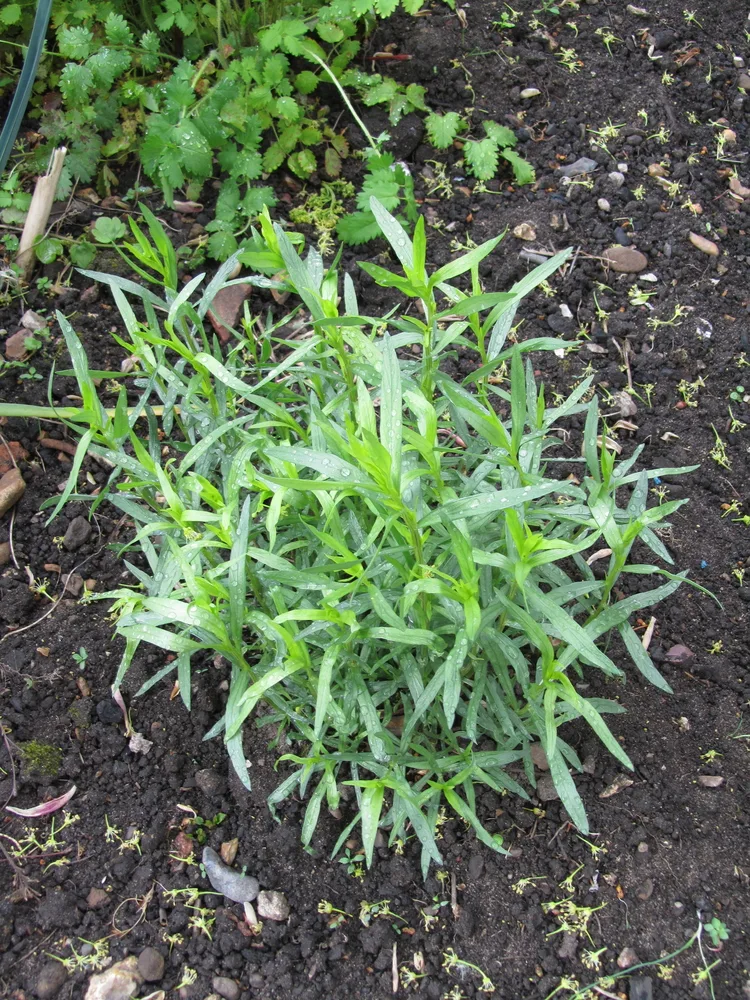
Perennial tarragon has strongly aromatic leaves that work very well when added to salads, egg, fish or chicken dishes. It is best to go for French tarragon, because Russian tarragon has an inferior flavour.
The plants will tend to do well in a sheltered, sunny position. And will thrive in poorer and drier soils.
Tarragon is another good choice as a companion plant. It is said to be particularly beneficial when grown alongside eggplants or sweet peppers.
7. Sage
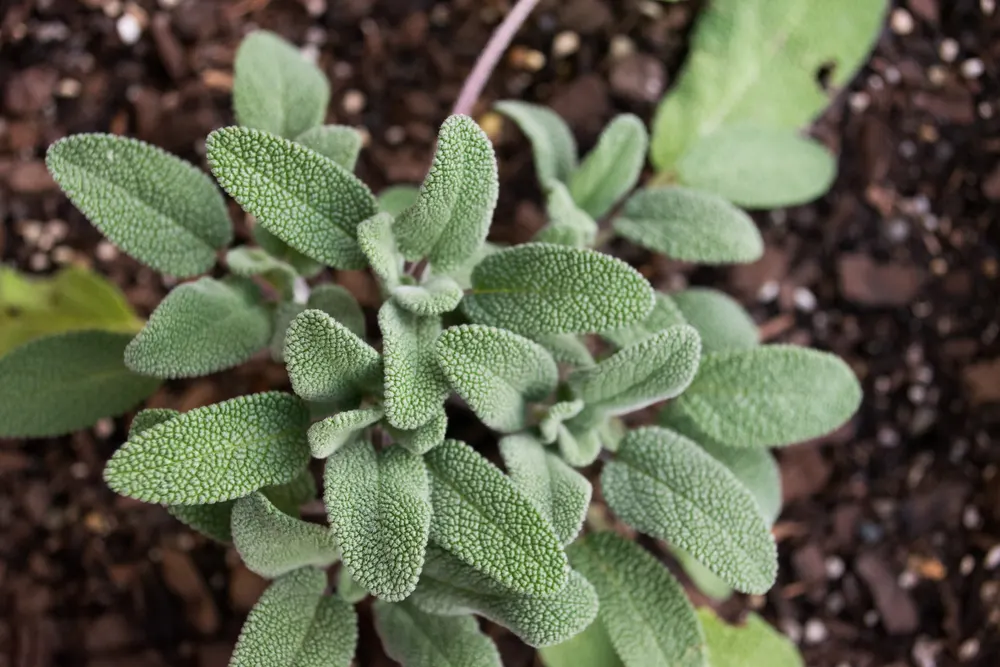
Sage is another aromatic herb that is said to help fruits and vegetables by attracting honeybees and other pollinators, so this is another great plant for companion planting or for inclusion in polycultures.
This plant too enjoys relatively dry soil, and can cope with a degree of drought. However, it must be grown in full sun.
Sage is predominantly a culinary herb, but also has a long history of medicinal use, and is said to be beneficial, among other things, for the digestive system.
8. Mint
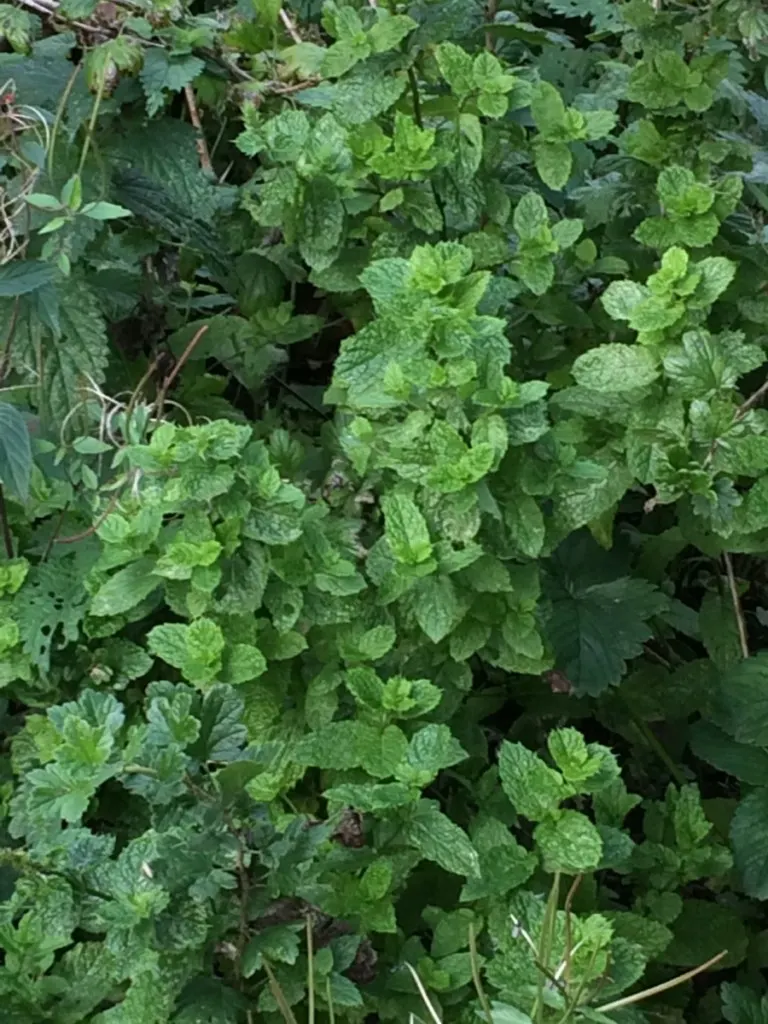
Mint is, perhaps, the easiest of all perennial herbs to grow. It will tend to thrive in a range of settings. And there are a huge range of different mints to choose from, with very different scents and flavours.
In addition to the traditional peppermints and spearmints, you can also choose to grow more interesting varietals, such as chocolate mint, lemon mint, apple mint etc..
Mint is not only useful in the kitchen, it is very useful in the garden too. It repels, confuses or distracts a wide range of pest species, and can be a very useful ground cover plant.
For these reasons, it can be a great plant to use in companion planting, in guilds, and in polycultures such as forest gardens.
9. Parsley (Biennial)
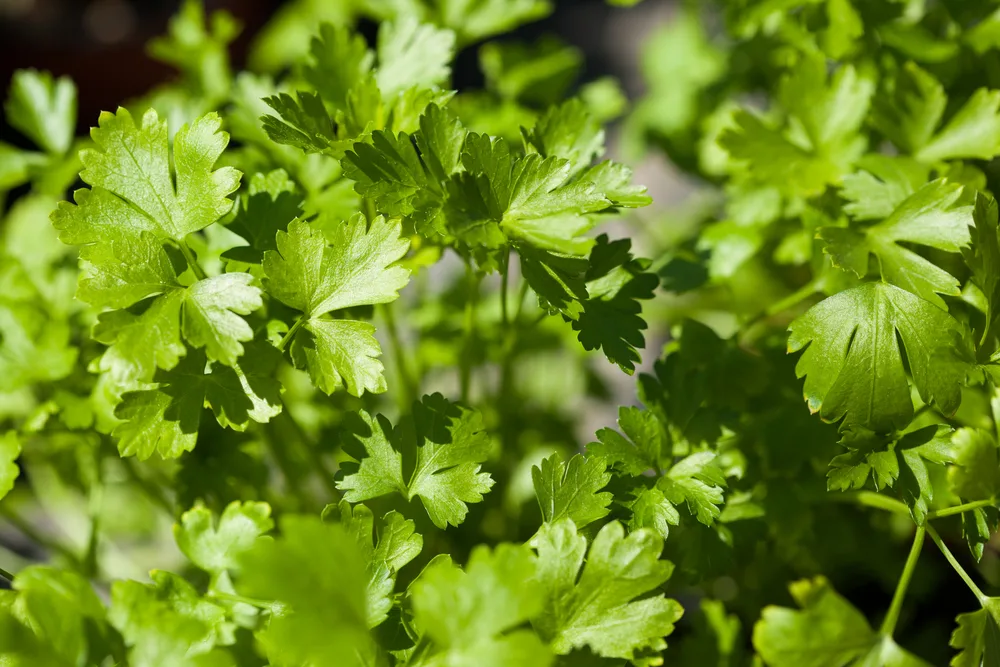
This herb is actually a biennial, but it can be treated almost as a perennial in many gardens because, though each plant will only last for a couple of years, it self seeds so readily that it can often become a far more ‘permanent’ feature.
Parsley can be grown in light (or dappled) shade, or in full sun. It is considered to be a good companion plant for a range of common edible crops, both in annual gardens and in perennial polycultures.
It is said to be particularly beneficial when grown near roses, tomatoes, carrots, and asparagus, and repels pest species while also attracting beneficial wildlife.
10. Lemon Balm
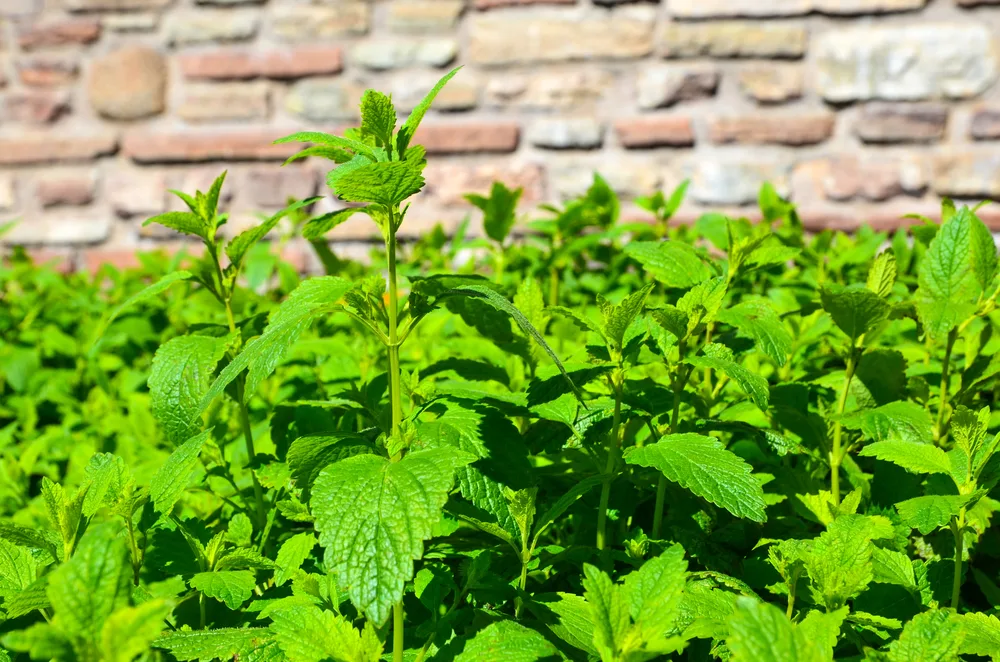
Lemon balm (Melissa officinalis -L.) is another perennial herb that can help with attracting bees and other beneficial insects to your garden. It is said to repel ants and flies. Its lemony taste and aroma also make it a favourite for culinary use.
Lemon balm will do best in a moist, light soil, but can do well in a range of settings. Lemon balm is said to be particularly beneficial as a companion plant for brassicas, though it can also aid a range of other plants.
11. Chives
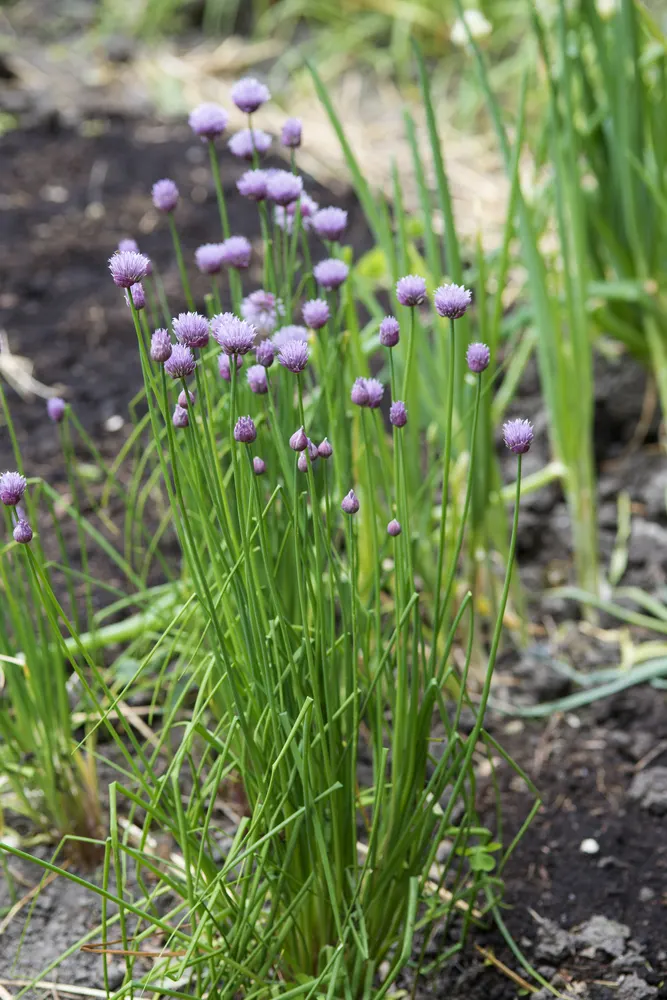
Chives are an allium, and like other members of the onion family, they have a strong aroma that can help to prevent pests in your garden. This means that they are one of the plants that has wide application as a companion plant. When in flower, chives are also a great pollinator-attracting plant.
Chives also, of course, have varied culinary use. They can be added as a garnish to a wide range of dishes imparting a delicate onion flavor.
12. Garlic Chives
Related to regular chives, garlic chives carry a range of the same benefits as the above. They have a somewhat milder flavour, however, like a cross, as the name suggests, between garlic and chives. The leaves of these are great used as a garnish, or in a range of salads.
Garlic chives are best grown in full sun, and prefer a moist yet free draining soil. Though they can tolerate drought, and so could be a good choice for a dry climate garden.
13. Sorrel
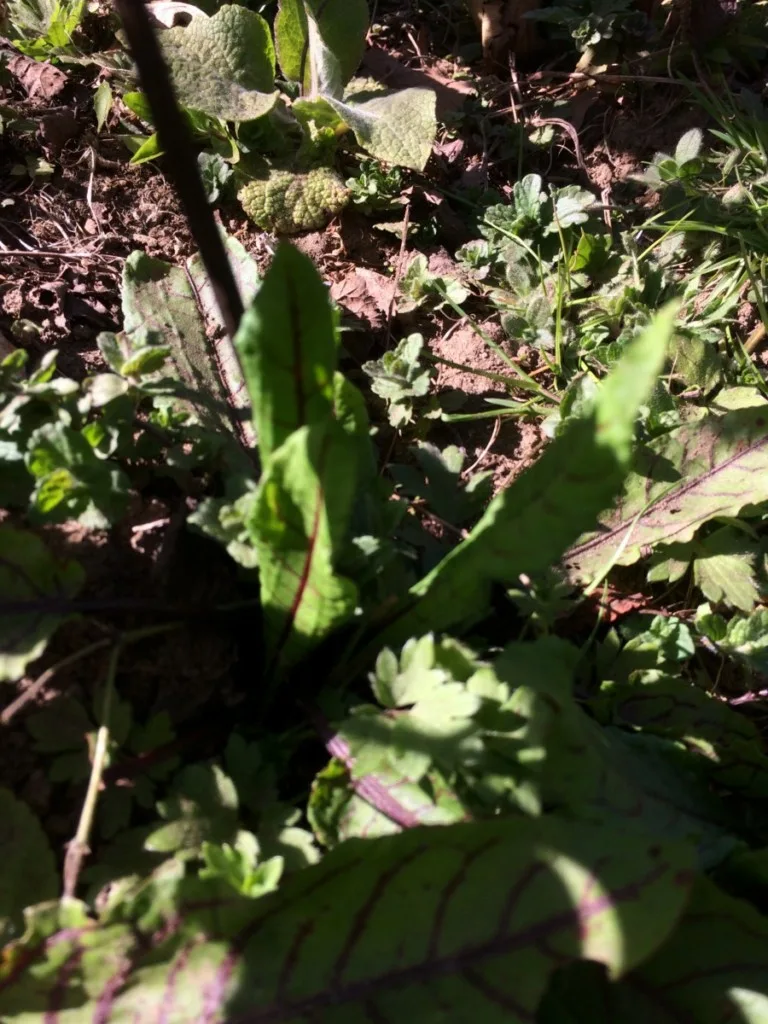
Sorrel is one of my favourite perennial herbs for the dappled shade of my forest garden. I grow red-veined sorrel, and Belleville sorrel in the partial shade around my fruit trees and shrubs, and find that they provide small but significant quantities of slightly lemony leafy greens for salads throughout much of the year.
They should not be eaten excessively, due to their oxalic acid content, but are fine in small quantities.
Sorrel thrives in many soil types and conditions, and so can be a good choice for many gardens. There are a number of different varieties to choose from.
14. Yarrow
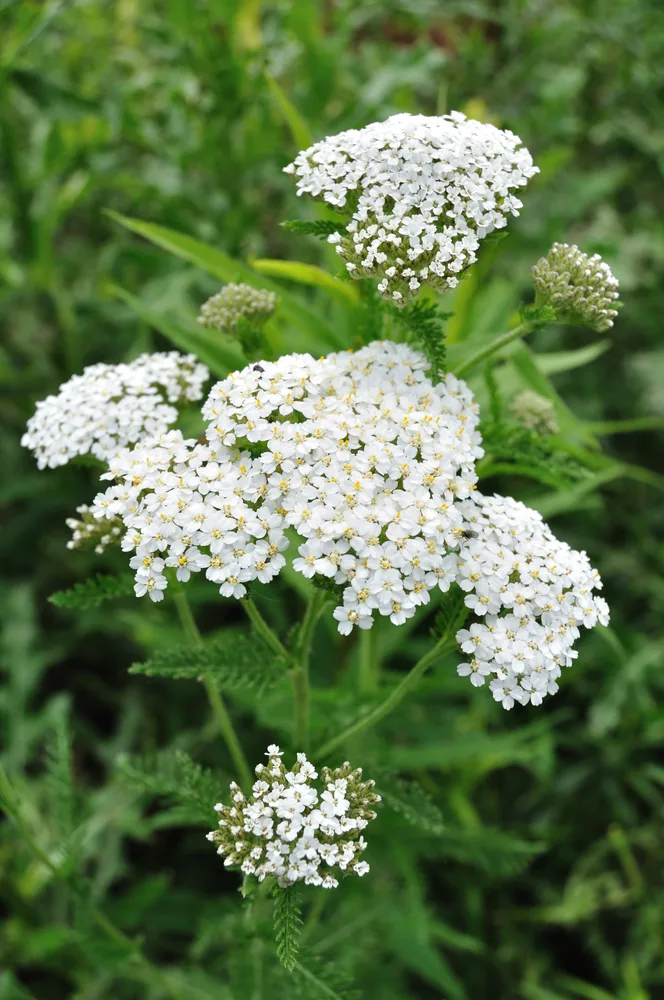
Yarrow is another of my favourites. It has a long history of use as a herbal medicine. But yarrow cannot only heal you. It can also have a healing and nurturing effect on the ecosystem of your garden.
15. Chicory
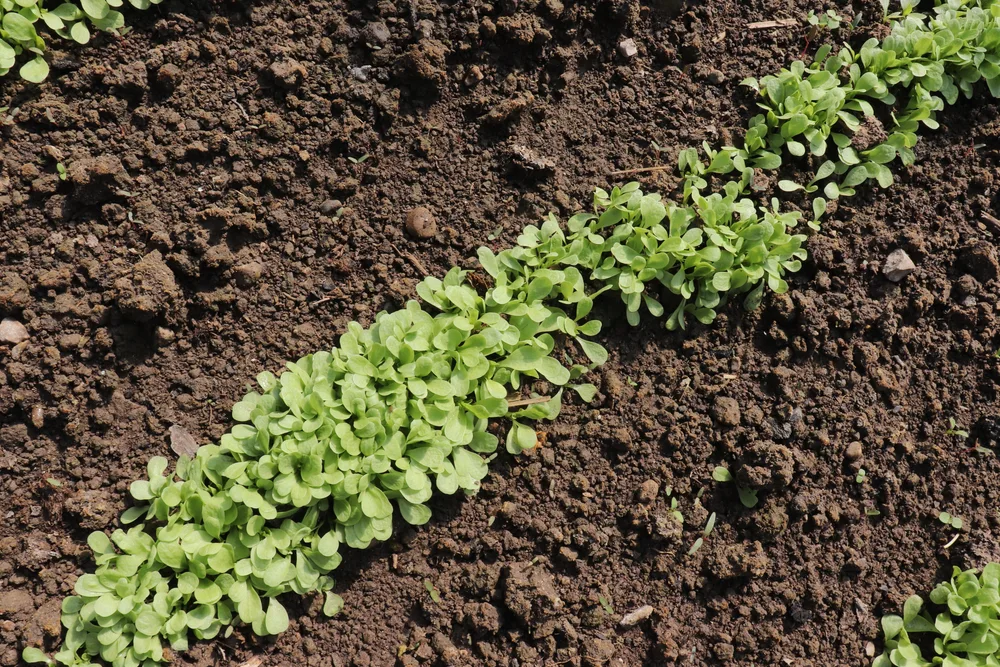
Chicory will grow best in full sun, in a moist yet free-draining soil. It, like yarrow and a number of the other herbs on this list, is noted for attracting beneficial wildlife.
The bitter leaves can be blanched to deduce bitterness, or harvested for winter salads, since they are less bitter at this time of the year.
Boiled young roots can also be used as a vegetable, and impart flavour and a deep, rich color to stews and soups. Chicory is also used medicinally, and is said to have a tonic effect on the liver and digestive system.
16. Rue
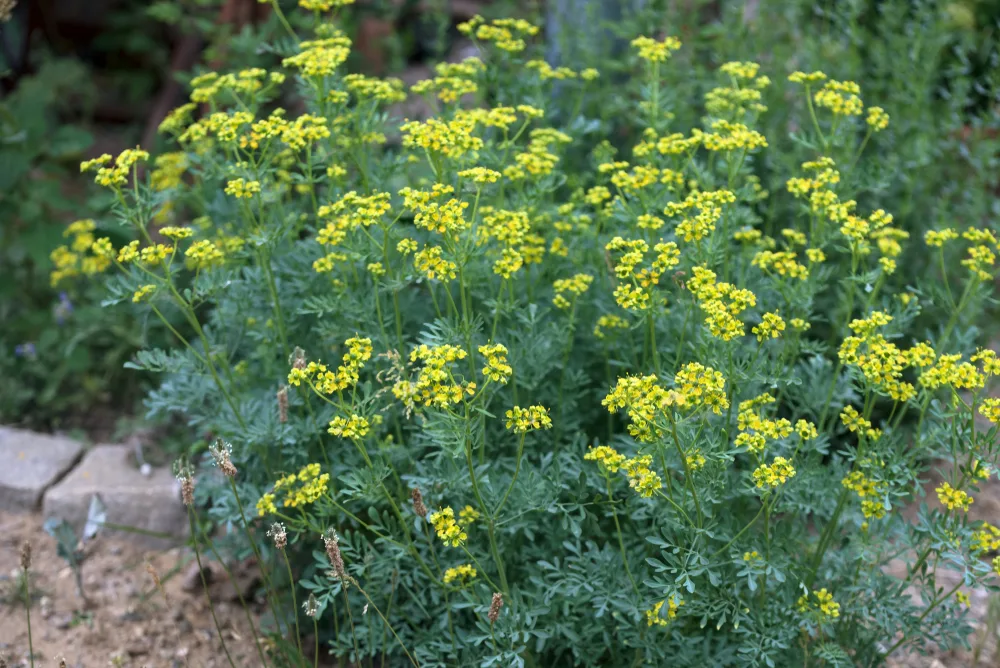
Rue is toxic in large quantities, and so caution should be taken. However, it has been used as a pot herb and in herbalism in small quantities.
The main reason to grow it is to repel certain insects. It is said to have particularly beneficial pest control properties when grown near roses and raspberries.
The dried herb is also said to repel moths when placed in a wardrobe. It will do best in an open and sunny position. The leaves give off a pleasant orange-like fragrance.
17. Winter Savory
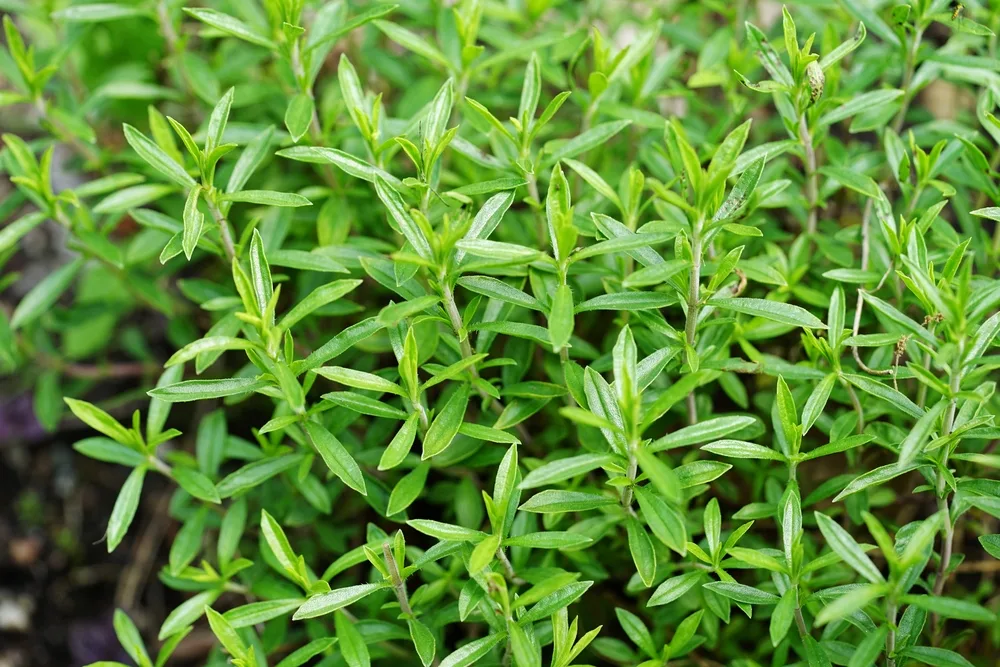
Winter savory is another aromatic perennial herb that is known for attracting beneficial wildlife and repelling unwanted pest species. It requires full sun, but can grow well even in relatively dry conditions and in nutritionally poor soil.
The leaves, raw or cooked, are used as a garnish, made into teas, or used as flavoring in a range of recipes. The plant is also used occasionally in herbal remedies, and is said to have a range of positive effects.
18. Bay Laurel
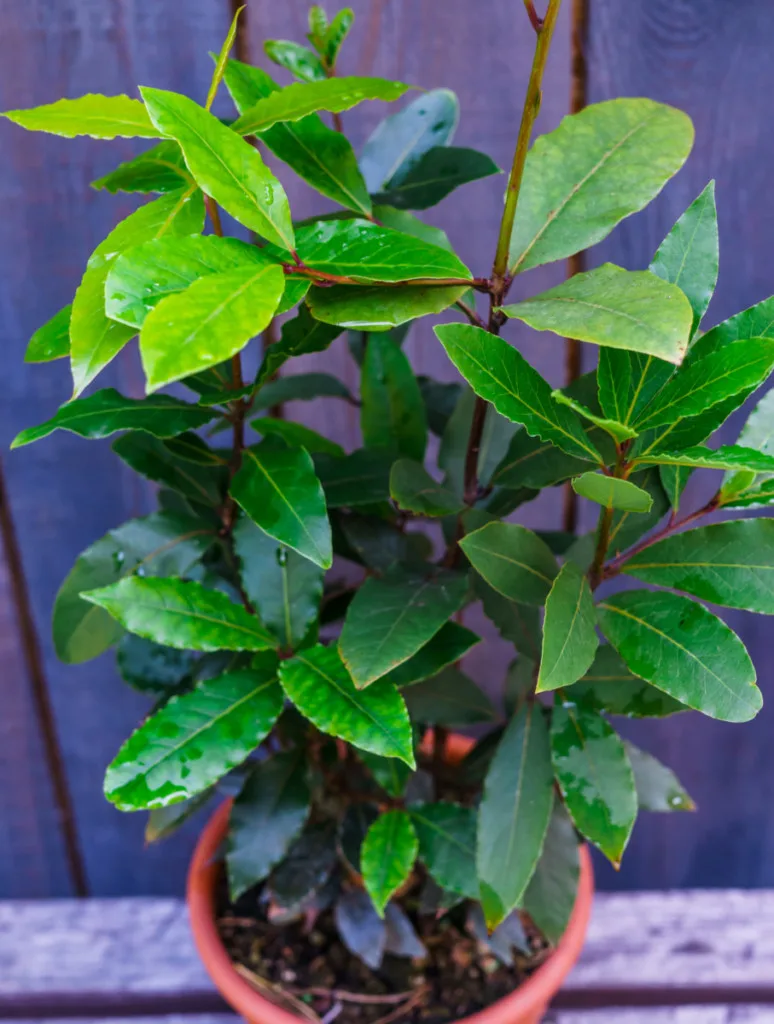
Bay leaves, fresh or dried, are commonly used as a pot herb. They are added as flavoring for soups, stews and other recipes. Bay leaves are an essential ingredient of the herb mix ‘Bouquet garni’.
This is a great choice to grow in your garden because it is highly resistant to pests and disease, and is said to protect neighboring plants from health or pest problems.
Here’s our guide for growing bay laurel in your garden.
19. Lovage
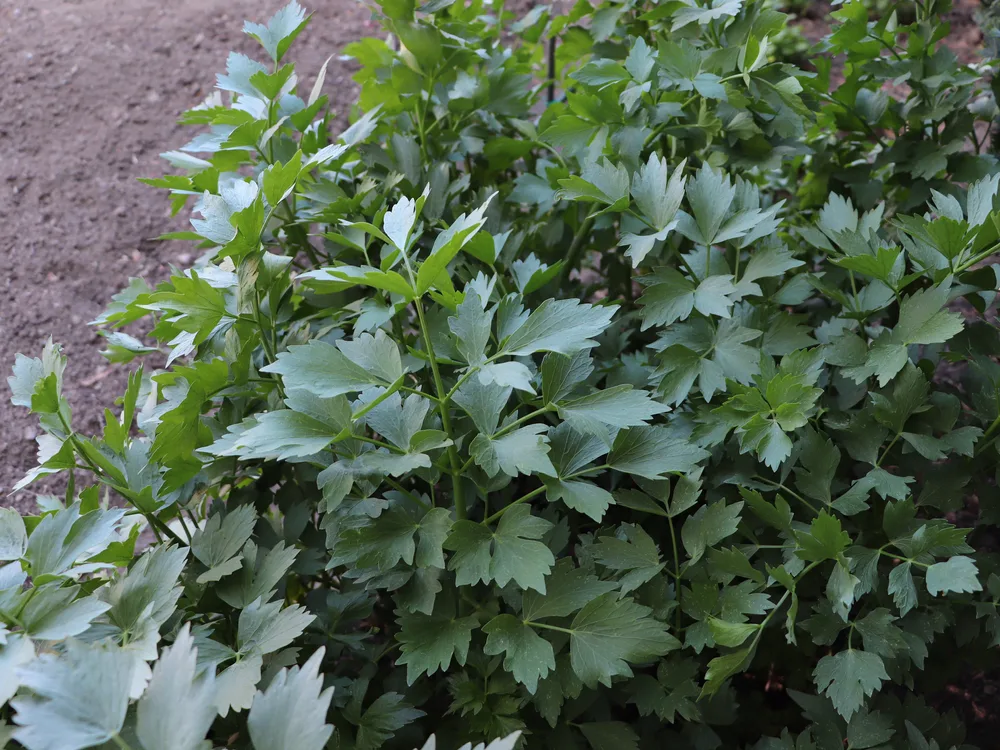
Garden lovage is another great perennial herb to grow. It can cope with a range of different soil and environmental conditions, and is another herb that is noted for attracting beneficial wildlife, and for its utility as a companion plant.
This herb is mostly used in the kitchen. It imparts a yeasty/ celery flavor to recipes. The leaves can be used fresh or dried, and are available right through from early spring through to late autumn.
20. Hyssop
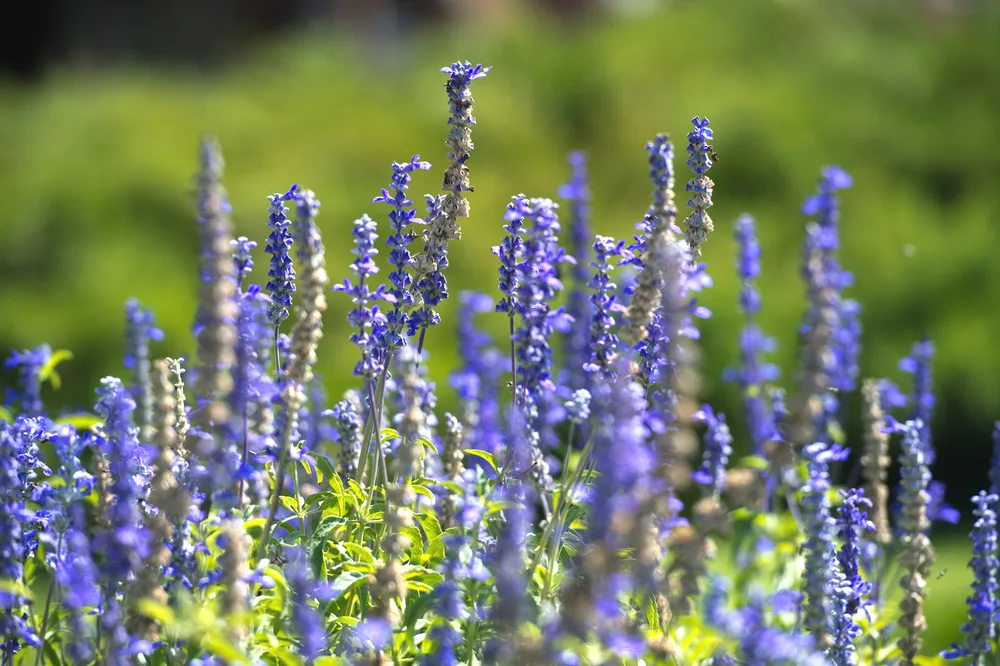
Hyssop has a long history of medicinal and culinary use, though its strongly aromatic flavor has somewhat fallen out of favour in recent years.
Leaves and young shoot tips are used as a pot herb to flavour a range of salads and cooked recipes. The flavor is a combination of sage and mint.
The growing plant acts as a trap crop for cabbage white butterflies, helping to keep brassicas safe. The plants also attract a range of other insects, and repel others. A tea made from the leaves may help to control plant diseases.
21. Sweet Cicely/ Anise
This perennial herb is akin to fennel and caraway (biennials), and is used as a herb, raw or cooked, which has a strong taste that is reminiscent of anise.
It also has a strong history of use as a medicinal herb. It can grow well in most fertile soils, and attract beneficial wildlife to your garden.
22. Roman Chamomile
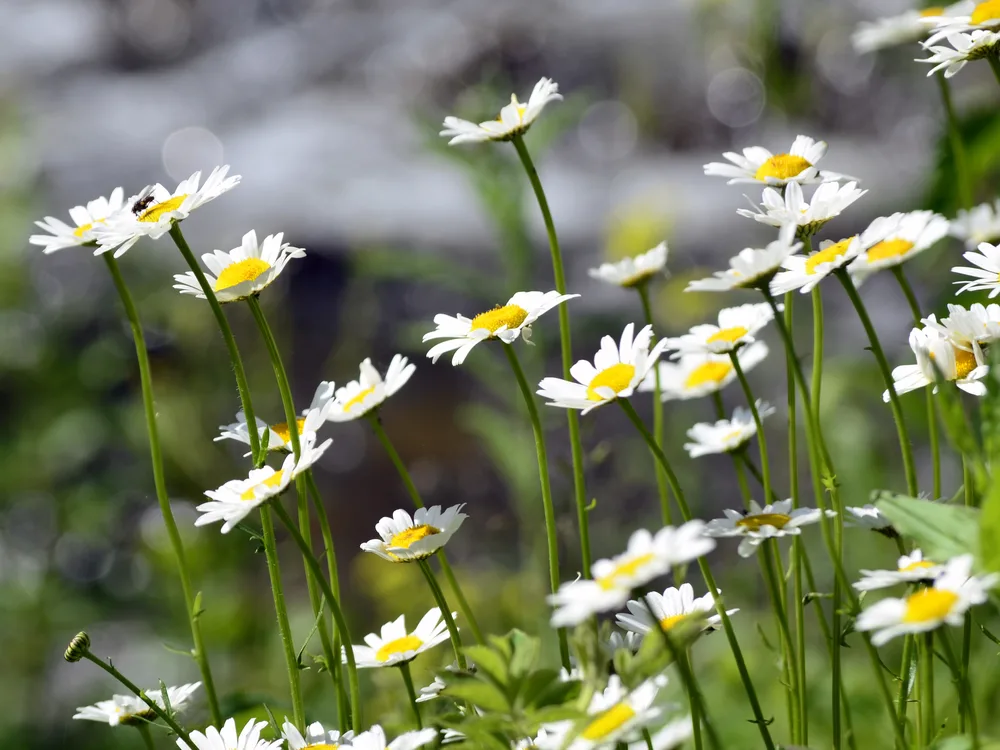
Unlike German Chamomile, which is an annual plant, Roman chamomile is a perennial that is in leaf all year.
Chamomile is well known as a useful medicinal plant, and also has a range of other household uses. Young sprigs are also used as seasoning, and in flavoring herb beers or herbal teas.
Chamomile is insect repellent while in growth and when dried. It is a dynamic accumulator and can also be used as a liquid feed, compost activator or mulch material.
23. Salad Burnet
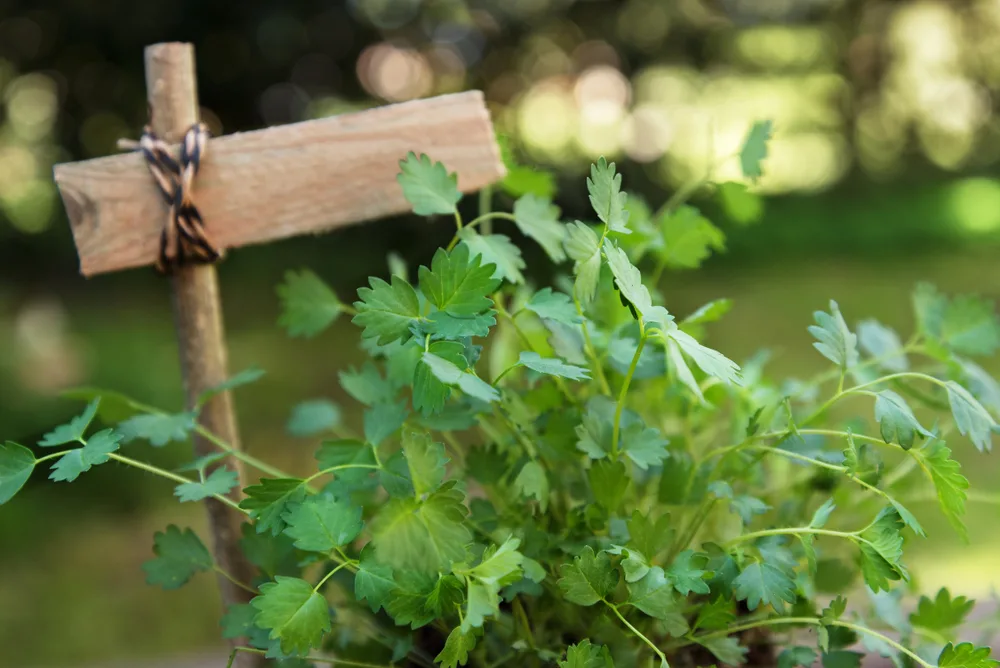
The young leaves of this evergreen perennial can be used, raw or cooked. Best taken before plants come into flower, they can be eaten in salads, used as garnishes, or added to other recipes.
Sometimes described as very bitter, the leaves are much milder when grown on a chalky soil. Some people say they have a slightly cucumber-like taste in winter.
These plants have extensive root systems and so can be beneficial for purposes of erosion control. They are also dynamic accumulators that can be chopped and dropped to return nutrients to the system.
24. Bergamot
Most commonly known as an ingredient in Earl Grey, this perennial herb is most commonly used to make an aromatic tea. The leaves and young shoot tips can also be used, raw or cooked, in a range of salads, fruit salads, drinks etc..
The flowers are rich in nectar and attractive to bees and other pollinators. In addition to being useful, bergamot is also a charming ornamental plant.
25. Catnip
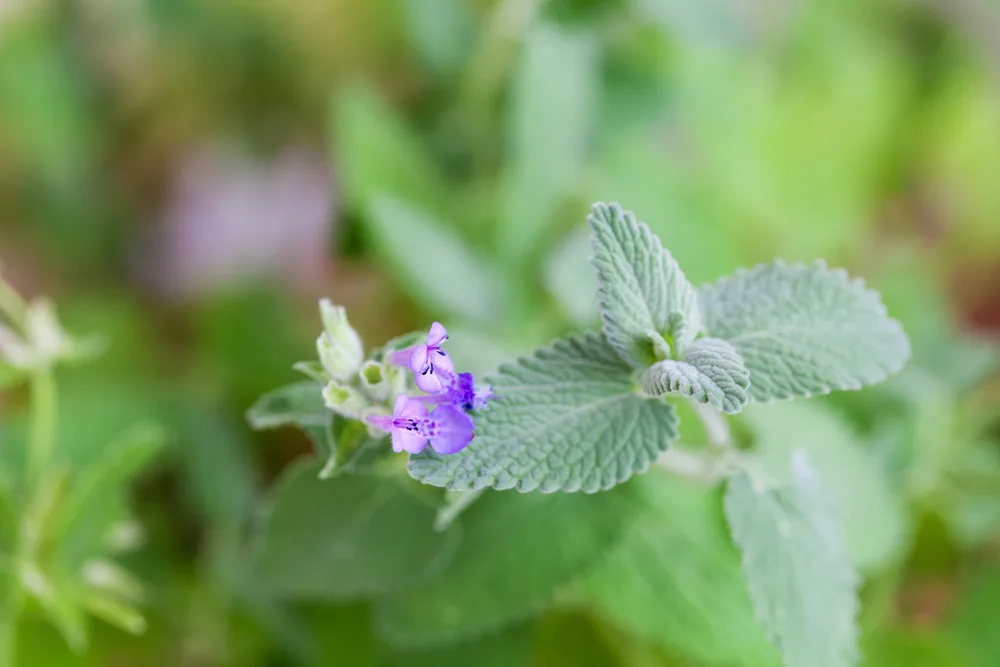
Catnip is, of course, best known for being attractive to felines. But this perennial herb can also be used in salads or in a range of cooked recipes. It has a mild, mint-like flavor. It also has applications in herbal medicine.
What is more, in the garden, catnip is said to repel a range of pest species, such as ants and flea beetles, amongst other things. An extract from the leaves (nepetalactone) has herbicidal and insect repellent properties.
26. Echinacea
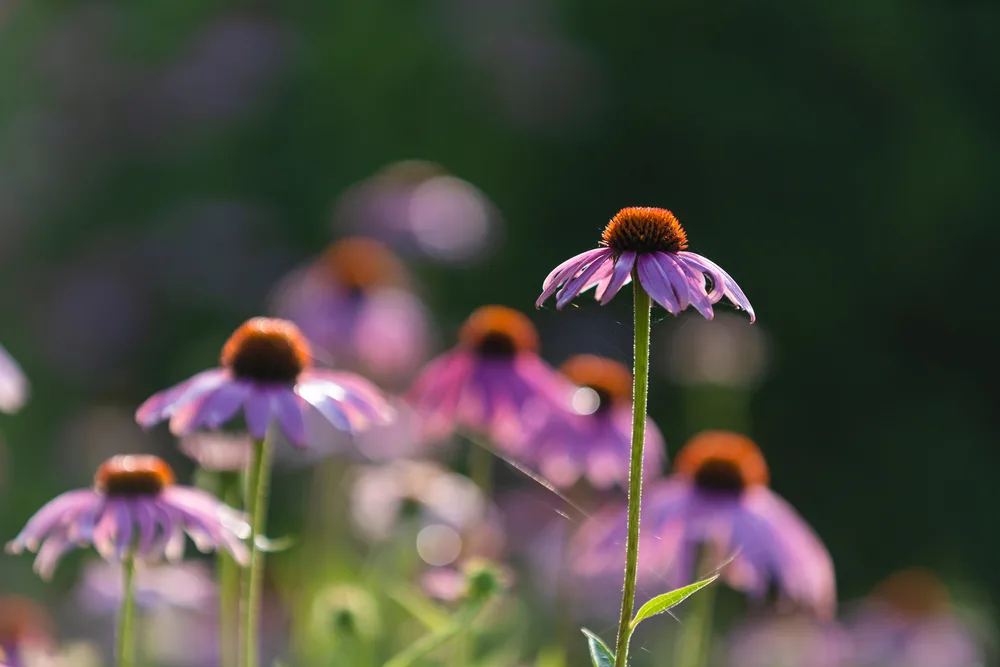
Echinacea is often used as an ornamental plant. But this is also an important natural plant ingredient for Western herbal medicine.
It is used in herbalism in a range of different ways. And will grow best in a deep, rich loam in a sunny position. It also attracts butterflies and birds to your garden.
27. Valerian
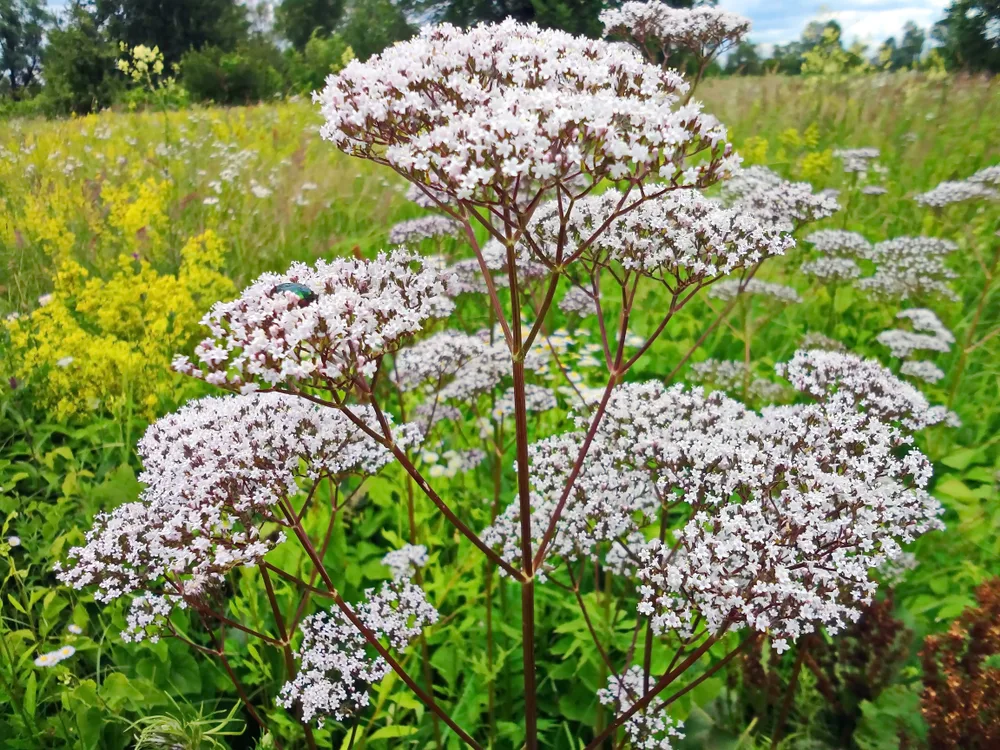
Valerian is another interesting perennial herb to consider. It can be used in moderation in a herbal tea and is used medicinally in a range of different ways. And is particularly beneficial to reduce stress and encourage sleep. It also improves sleep quality and reduced blood pressure.
The leaves are very rich in phosphorus and can be useful when added as mulch, or to your compost heap. It is said to attract earthworms.
28. Marshmallow
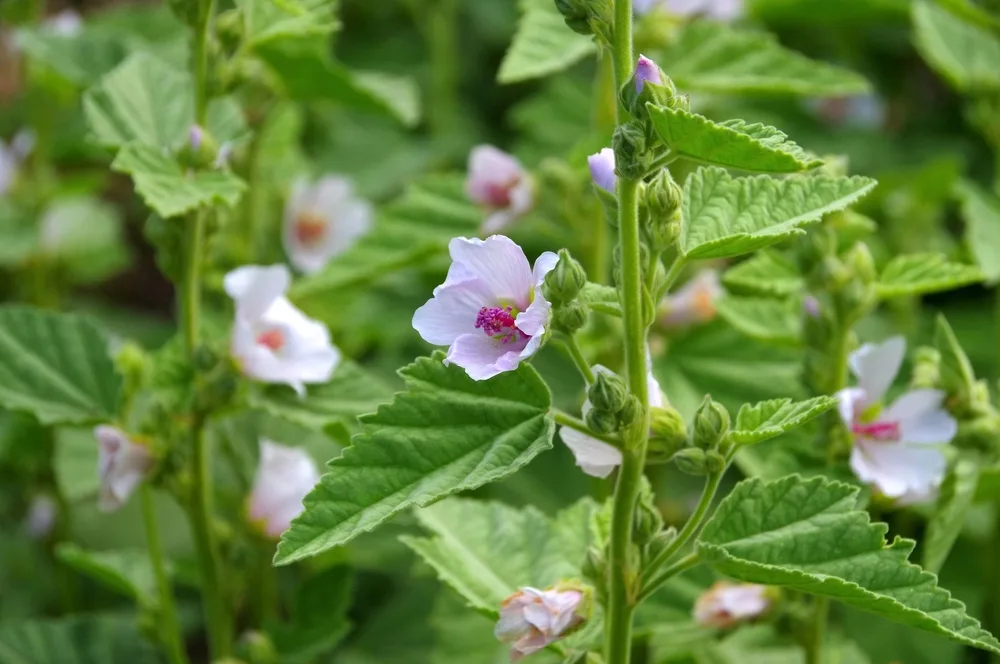
The leaves of the marsh mallow (Althaea officinalis) are used as a pot herb or to thicken soups and sauces.
Though the leaves are fibrous and somewhat hairy, they also have a mild and pleasant taste and can be eaten raw, in salads etc..
The root can also be used as a vegetable. And when dried, ground to a powder and made into a paste, it was traditionally roasted to make the sweet ‘marshmallow’. The plant also has medicinal benefits, and cosmetic uses.
29. Tansy
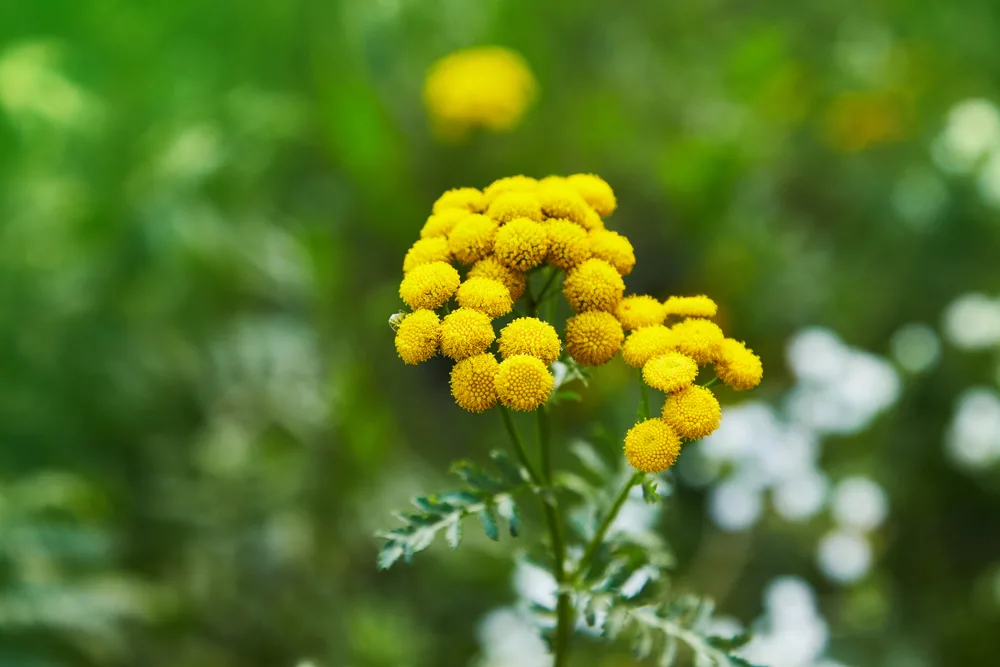
Tansy is poisonous if large quantities are ingested. However, this perennial is another great wildlife attractant.
The plant repels a range of insect pests, and has attractive flowers. It also has a good nutrient profile and can be beneficial when chopped and dropped, or when added to the compost heap.
30. Willow Herb
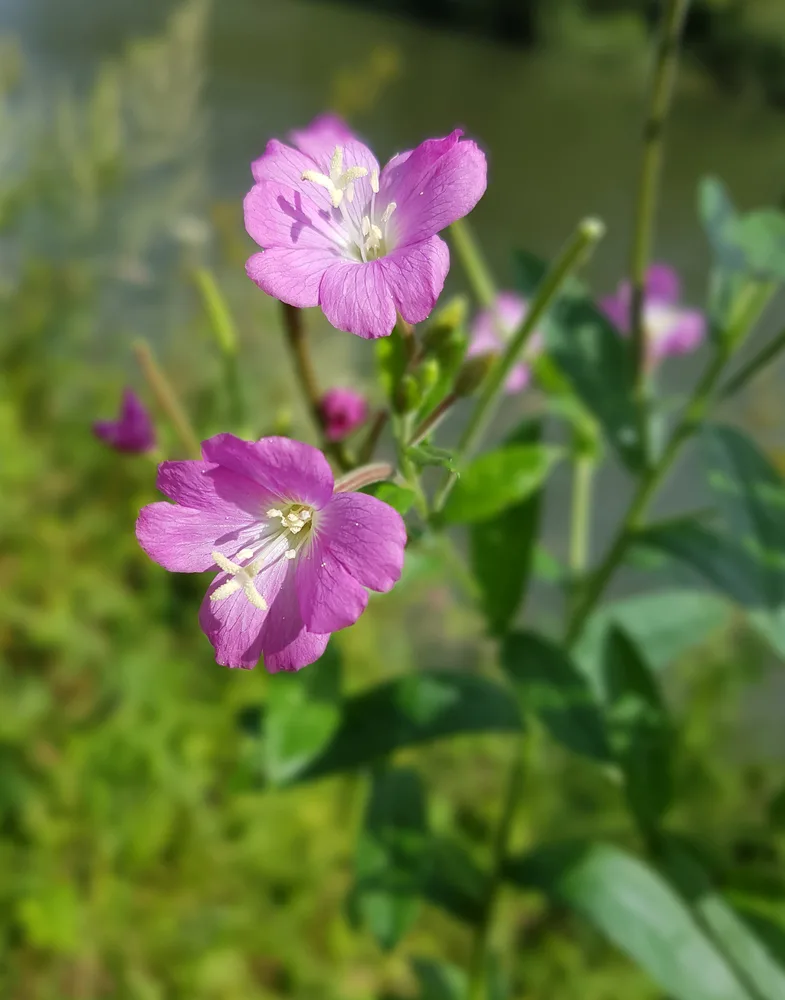
Also known as fireweed, you may be more familiar with willow herb (Epilobium – L.) as a weed. But this can also be a useful perennial herb.
Young shoot tips and leaves can be eaten in salads or cooked as a vegetable when young. They are a good source of vitamins A and C. Flower stalks can also be cooked as a vegetable when flowers are in bud.
The pith of older stems can also be eaten, it is mildly sweet and can be used as a flavouring in soups or stews. The flowers are loved by bees and other beneficial insects.
31. Meadow Sweet
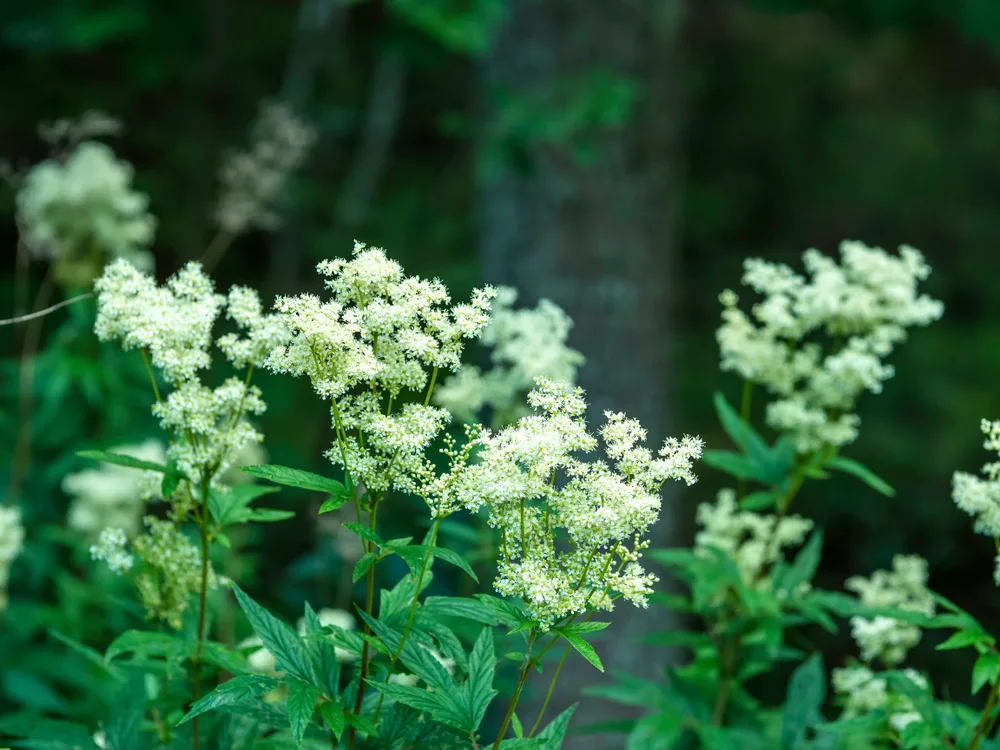
Meadow sweet has a long history of herbal use. The flower head contains salicylic acid, one of the ingredients of aspirin, and it can provide anti-inflammatory effects. It is used in a wide range of different ways in herbal medicine.
Young leaves, flowers and roots can be brewed into a tea, or used cooked as flavouring in soups and other recipes. However, caution is required. This plant is not recommended for use by asthmatics, nor by children under 12, due to the salicylate content.
32. Alfalfa
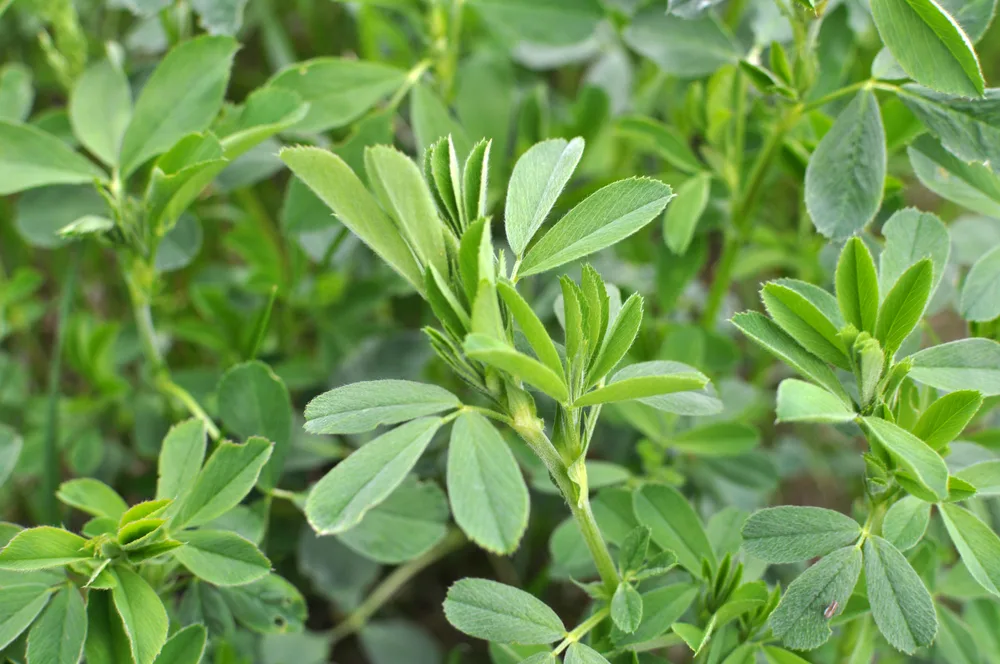
Alfalfa is a perennial legume which can be used as a medicinal herb in addition to being used as a sprouted seed. Leaves and young shoots are very rich in A, B and C vitamins and are a good source of protein.
As a legume, alfalfa is a very useful nitrogen fixer, and can create good ground cover as a green manure.
33. Clover
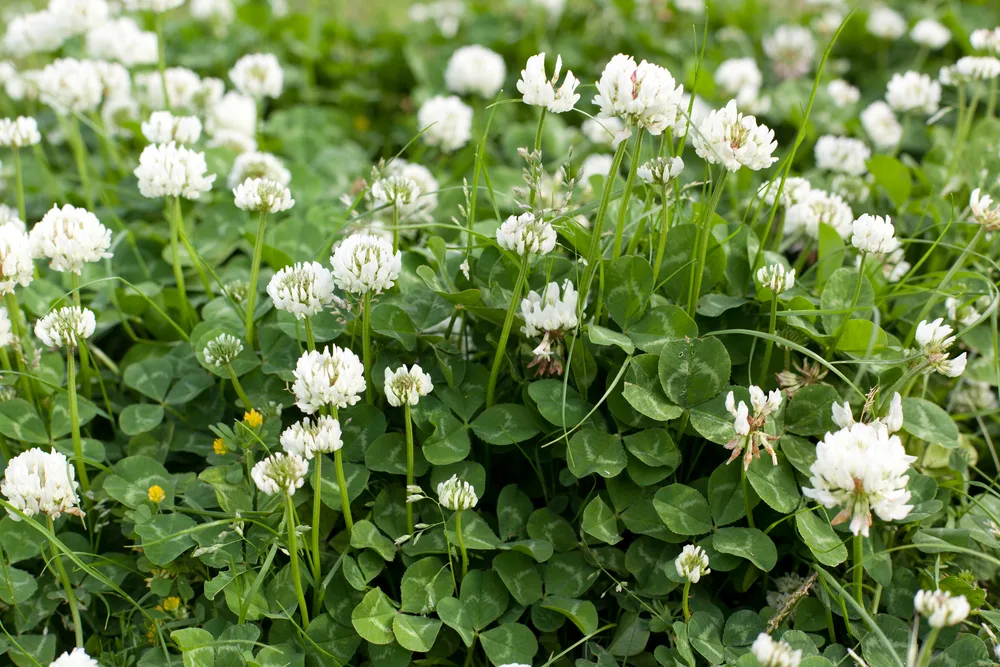
Clovers are other nitrogen fixing plants which can be very useful in a garden. But what you might not realise is that they can also be useful as culinary herbs.
White clover leaves, for example, can be eaten cooked as a pot herb or as a spinach substitute in a range of recipes. Young flowers can also be used in salads.
34. Good King Henry
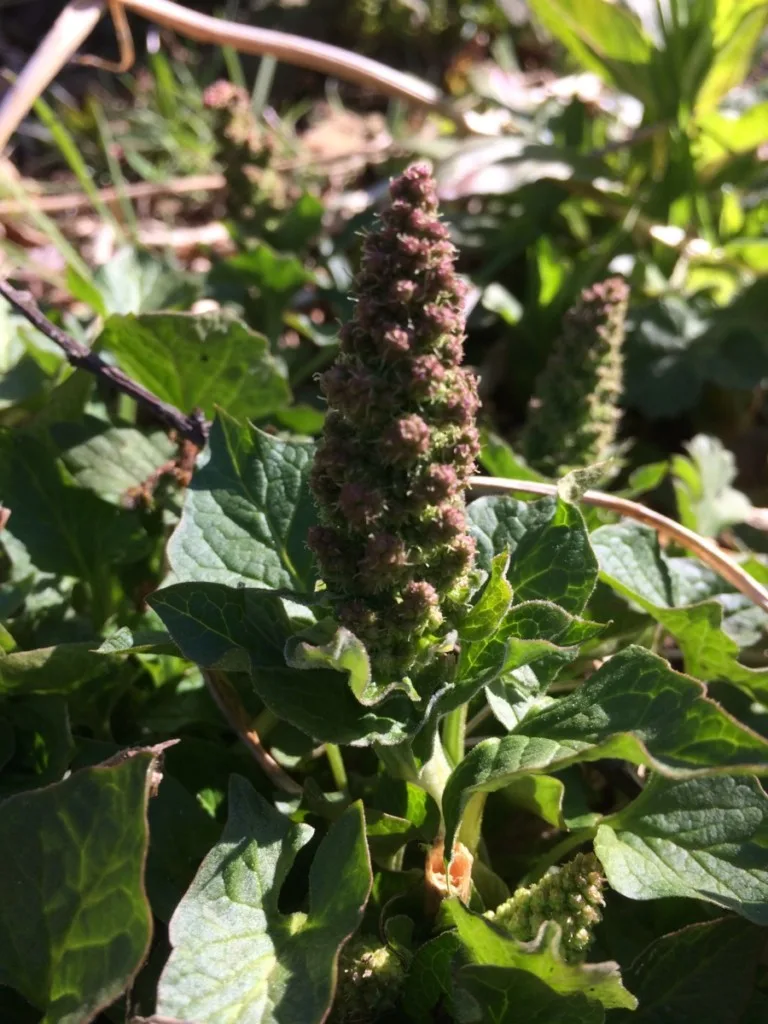
Chenopodium bonus henricus is a great forest garden plant. The plants contain saponins and oxalic acid, but can be a useful edible crop and pot herb when eaten in moderation. Cooking leaves is best.
The leaves can be used as a pot herb, and make a spinach substitute for use in a range of recipes. Young flowering shoots are used as a ‘poor man’s asparagus’ and are a delightful spring vegetable.
35. Herb Patience
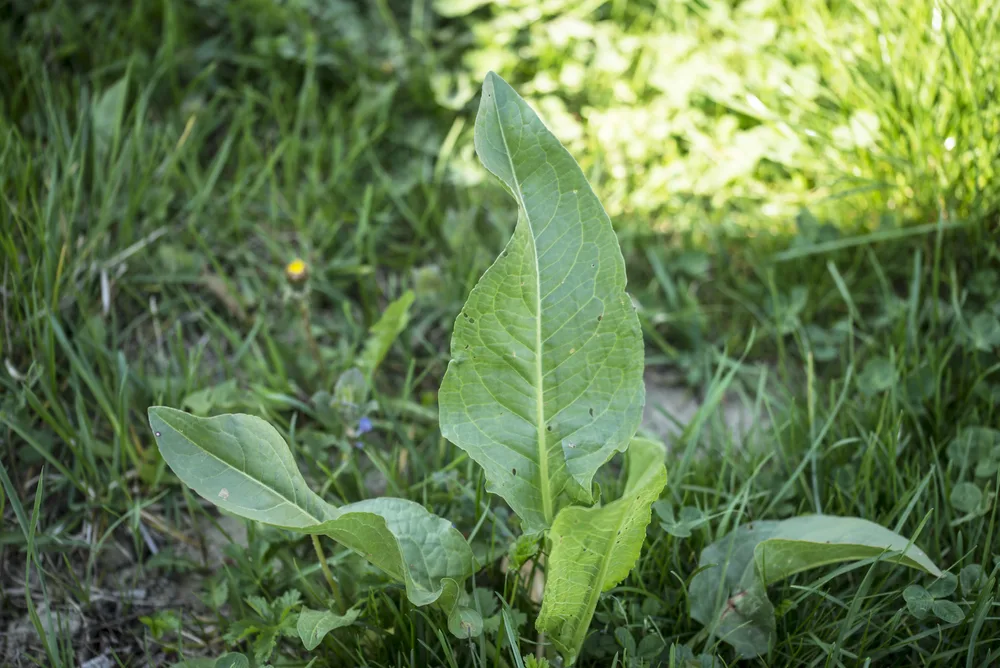
Herb patience (Rumex patientia) is a perennial herb that also contains quite high levels of oxalic acids. But it is fine to ingest in smaller quantities.
Mild in flavour, the leaves can be used like spinach and have a fairly mild flavour. Herb patience is easy to grow, and is an important food source for the caterpillars of a number of butterfly species. This herb is also noted for attracting a wide range of other wildlife.
Of course, there are plenty of other herbs, perennial and otherwise, to grow in your garden. But these 35 are among the most interesting and useful options to consider.
Read Next:

Get the famous Rural Sprout newsletter delivered to your inbox.
Including Sunday musings from our editor, Tracey, as well as “What’s Up Wednesday” our roundup of what’s in season and new article updates and alerts.


